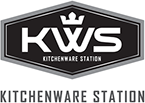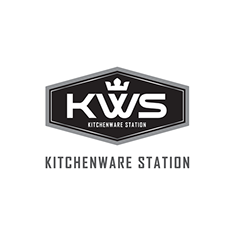In today’s culinary world, precision and efficiency are key, especially when it comes to slicing meat. Whether you’re a home chef looking to elevate your kitchen skills or a professional in the food industry, investing in a quality meat slicer can revolutionize your cooking experience. But with so many options available, how do you know which meat slicer is right for you? Fear not! This comprehensive buying guide will walk you through everything you need to consider before making your purchase.
Types of Meat Slicers
When exploring meat slicers, you’ll encounter three main types: manual, semi-automatic, and fully automatic.

Manual Meat Slicers:
Ideal for occasional use and smaller quantities of meat, manual slicers offer hands-on control over slice thickness, making them popular for home kitchens. However, they come with some drawbacks to consider. One disadvantage is the time and effort required for operation, as slicing large quantities can be labor-intensive.

Semi-Automatic Meat Slicers:
Combining manual operation with automatic blade movement, these slicers offer a balance of control and efficiency, suitable for moderate usage. Customer can usually create a more consistent and effortless slices using a semi-automatic slicer compares to a manual slicer.

Fully Automatic Meat Slicers:
Designed for high-volume commercial settings, these premium slicers automate both the slicing and carriage movement, users can effortlessly achieve precise cuts with minimal manual intervention, maximizing productivity and consistency.
How to Choose a Quality Meat Slicer?
When it comes to purchasing a quality food slicer, it’s essential to weigh your options carefully, considering both the type and volume of slicing you’ll be doing. Different slicers are designed with varying capabilities for slicing meats, cheeses, and vegetables, so understanding your specific needs is key.
While entry-level slicers may seem appealing due to their lower price tag, it’s important to recognize their limitations. These models aren’t designed for heavy usage, particularly with cheese. Pushing them beyond their capacity can cause premature wear, affecting performance and lifespan.
On the other hand, heavy duty slicers provide superior durability, reliability, and advanced safety features. Despite a higher initial cost, they deliver increased productivity and enhanced safety, making them a wise long-term investment, especially for frequent use.
Blade Material
In the world of meat slicers, three primary blade materials reign supreme: carbon steel, stainless steel, and stainless steel coated with Teflon. Each material boasts unique properties that can significantly influence your slicer’s performance. It’s essential to grasp these differences to make an informed decision when selecting the right blade for your needs.
Dive deeper into the topic with our blog post: CARBON STEEL, STAINLESS-STEEL OR TEFLON COATED STAINLESS-STEEL BLADE: WHAT’S THE DIFFERENCE?
Blade Size
Blade size significantly impacts slicer performance and versatility. Larger blades, typically ranging from 12 to 14 inches, are well-suited for heavy-duty or commercial use, effortlessly handling thicker cuts and larger quantities of food. In contrast, smaller blades, typically 6 to 10 inches, excel at precision slicing and are ideal for home use. The choice of blade size determines the slicer’s capability to meet specific slicing needs, making it essential to consider when selecting the right slicer for your kitchen.
Product Tray Size and Design

When considering a meat slicer, don’t overlook the size and design of the product tray—it’s crucial for both the size of meat you can slice and the effort required during slicing. Larger carriages are perfect for handling bigger cuts, ensuring smoother slicing with minimal exertion. If you’re planning to slice larger products, it’s essential to confirm that the slicer’s carriage can accommodate them before making a purchase.
For commercial use slicers, opting for a slicer with a 45° angled product tray is recommended. This design utilizes gravity to hold the product against the knife, reducing the pressure you need to apply while ensuring consistent slicing. Additionally, adjustable horizontal clamps secure irregularly shaped products, allowing for precise slicing of produce of any size. With these features, you can confidently slice any produce, large or small, to your heart’s content.
Motor Power
In electric meat slicers, motor power is pivotal for optimal performance. Opting for higher wattage motors not only ensures increased power and efficiency, effortlessly slicing through tough or frozen meats and preventing the machine from overheating during prolonged use, but also offers the advantage of quicker and more consistent slicing. This is particularly beneficial in high-volume settings, where swift and efficient meat preparation is essential for maintaining productivity and quality standards.
Adjustability and Thickness Control
Versatility in slice thickness is essential for various culinary creations. That’s why it’s crucial to look for a slicer with adjustable thickness settings to accommodate various slicing needs, from paper-thin to thicker cuts, depending on your recipe or preference. Ensure precise control over thickness adjustment for consistent results across different meats.
Certifications
In addition to considering the type, blade size, motor power, and other features of a meat slicer, it’s essential to prioritize certifications that guarantee safety and quality.

ETL Certification: Products with ETL certification have undergone rigorous testing and meet North American safety standards. This certification ensures that the slicer is safe to use and complies with all necessary regulations.

NSF Certification: NSF certification indicates that the slicer meets stringent standards for sanitation and food safety set by NSF International. This certification is particularly important for equipment that comes into direct contact with food, ensuring that it won’t contaminate food or compromise hygiene standards.

FDA Compliance: While not all meat slicers require FDA approval, ensuring FDA compliance is crucial for equipment that comes into direct contact with food. This certification guarantees that the slicer meets U.S. federal regulations, safeguarding both the health of your customers and the reputation of your business.

CE Certification: The CE mark indicates that a product complies with European Union (EU) safety, health, and environmental protection standards. Meat slicers bearing the CE mark meet stringent requirements for safety and performance, making them suitable for use in European markets.

RoHS Compliance: RoHS (Restriction of Hazardous Substances) compliance certifies that a product does not contain certain hazardous materials, such as lead, mercury, cadmium, and certain flame retardants. This certification ensures that meat slicers are environmentally friendly and free from harmful substances, promoting sustainability and consumer safety.

LFGB Certification: LFGB (Lebensmittel- und Futtermittelgesetzbuch) is a German food and feed code that sets safety standards for food contact materials. Meat slicers with LFGB certification comply with strict regulations regarding materials used in food preparation, ensuring that they are safe for handling food items without risk of contamination.
By choosing a meat slicer with these certifications, you can be confident that you’re investing in a safe and high-quality product that meets the highest standards of safety and hygiene.
Safety and Design Features
Blade Guard: Prioritize slicers with reliable blade guards to prevent accidental contact with the sharp blade during operation.
Hand Guard: A crucial safety feature in meat slicers. Its primary purpose is to protect the operator’s hands and fingers from coming into contact with the sharp blade during slicing. By using a hand guard, users can securely hold the food being sliced and push it towards the blade without risking injury.
Various Interlocks: designed to prevent the blade from spinning if essential components necessary for maintaining the unit’s safety and functionality are either missing or not correctly attached. This ensures that the slicer operates safely and effectively, minimizing the risk of accidents and ensuring operator safety.
The gauge plate must be set at “zero,” the sharpener correctly installed, the product tray pushed to the left, and the blade cover securely tightened. Only when all these criteria are fulfilled can the slicer be turned on for operation. This protects the blade’s edge and the operator’s fingers!
Brand Reputation and Warranty

A reputable brand and a solid warranty offer peace of mind. Research brands with a reputation for producing high-quality slicers known for their performance and durability. Check the warranty period offered by the manufacturer and spare part availability to ensure long-term reliability and customer support.
Investing in a meat slicer can revolutionize your culinary experience, offering precision and efficiency in meat preparation. By considering factors like types, blade size, blade materials, product tray size and design, certification, motor power, adjustability, safety features, and maintenance, you can confidently choose the perfect slicer to meet your specific needs. Whether you’re a home chef crafting gourmet dishes or a professional in a bustling kitchen, the right meat slicer will undoubtedly become an invaluable tool in your culinary arsenal.
To delve deeper into our product offerings and find the ideal commercial slicer or domestic slicer for your operation, contact us today. Our team is ready to assist you in selecting the perfect slicer that aligns with your needs and specifications. Let’s get you set up for success in your culinary endeavors!


